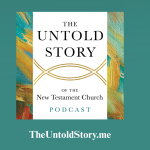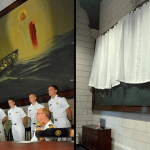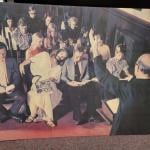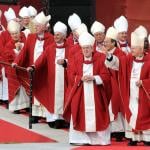Church history is a vital subject for any serious student of theology. Without church history, we don’t have a historical framework for the development of liturgical styles, church music, culture, and doctrine. Church history is not confined to pews and hymnals, though; because of the seeping nature of Christianity, Church history interacts with and affects everything around it. When the dots are connected, sacred and secular prove to be moot terms in the scope of history. Culture and spirituality are always connected in some way, and wherever the Church goes, it always shapes culture.
A sharp division between religion and daily life is thoroughly impossible. Secularism (secular: from the Latin word saecularis, meaning “the current or present age”) is an impulse to live completely in the material and current. These impulses are nothing new—the Sadducees denied the spiritual reality thousands of years ago—but they have become ubiquitous American cultural assumptions. The term “secular” has come to stand for the divorce of all “common things” like popular culture, education, and music from religiosity. But despite the ambiguous division between these things that Americans often believe to permeate their lives, it simply is not so. The church has undeniably influenced American culture.
In the United States, the good and bad of the American church can be seen throughout the entirety of culture, if one knows where to look. In education—one of the most shaping aspects of any culture—the church grounded its presence in American thought centuries ago. Religious Historian Edwin Gaustad describes the influence of the church on American education in this way:
In the first 250 years of this country’s history, religion and education were intimate and interdependent. … Religion dictated the choice of books, the course of study, the ends in view. Protestant-oriented, religious aura surrounded virtually all instruction, public or private. (Gaustad, A Religious History of America, 372)
For much of that time, out of the shadow of the church flowed culture—both the theologically rich and the spiritually rebellious. And while over the past century the church’s hold over culture has waned to almost nil, the influence of the church is still felt. While the onset of the Culture Wars seemed to point to a finalized divorce between American culture and American Christianity (the latter of which seemed plenty content to found its own separate culture), the Church had by then already left its theological impression on the culture. In the South, gospel and early folk music drew deep from the wells of Christendom to produce an unquantifiable amount of wonderful, spiritually rich music. From old spirituals to gospel songs composed on the banjo and accordion, American music was a spiritually alive medium.
But as culture changed, music changed. By the 1960s the phenomenon of popular music was in full swing, and like education before it, it was “secularized.” But not really. Musicians still instinctively gravitated to the rich spiritual aesthetics of earlier American music. In the 1940s and on, bluegrass music continued in the tradition of early American folk music by recording countless hymns and spirituals, and in the 1950s gospel music was revived by a white boy named Elvis Presley.
And while it is safe to say that some Evangelical Christians liked popular music, this new music’s audience was much broader, and included many who were drifting from the pews.
Today, Christians complain of the secularization of the culture. But American music is still haunted by the gospel. As with Christ-haunted protagonist Hazel Motes in Flannery O’Connor’s novel Wise Blood, Jesus is “[moving] tree to tree in the back of [the] mind” of American music.
Popular music generally and Americana in particular are full of Christian relics—images, sounds, and pictures that innately yearn for their spiritual fulfillment. The world—visible through artifacts like music, art and film—is longing for restoration found in the church, even if it does not know it.
Sometimes the artists who appeal to ecclesial or biblical imagery are actually believers, as with Sufjan Stevens or Bill Monroe. Often, however, these spiritually moving works are the products of nonbelievers acting out Romans 1:19-20:
For what can be know about God is plain to them, because God has shown it to them. For his invisible attributes, namely, his eternal power and divine nature, have been clearly perceived, ever since the creation of the world, in the things that have been made. (Romans 1:19-20a)
Long before Bob Dylan went through his “Christian phase” he was singing about Abraham and Judas Iscariot. And indie folk staple Sam Beam of Iron & Wine has made a career out of making haunting Biblical, religious, and spiritual themes beautiful. Despite his agnostic bent, the stories of the Bible and the religion that he saw growing up in the South left Beam permanently altered. His lyrics are spiritually complicated, but it goes beyond what is generically spiritual—Beam can’t seem to shake Jesus. If you listen to his KEXP set, you will not be able to escape the prevalence of beautiful spiritual imagery:
Even artists at a great remove from religion still appeal to spiritual—and particularly, American Christian—aesthetics. Take Justin Townes Earle, an artist cut from an “irreligious” cloth. The title track to his 2011 album Harlem River Blues is a stylistic relic of an old gospel choir. The song is not mocking gospel choirs, though: It is channeling them. The song is about a man getting ready to end his life by jumping into the Harlem River. To convey the gravity of the situation Earle didn’t choose a somber, minor key, but instead opted for a form that has dealt in mortality more that any other genre in the American music catalog has. Really, it is a tribute to the weight that can be conveyed through gospel. And gospel music can only carry that weight because of its namesake. So whether Justin Townes Earle knows it or not, his nod to he power of gospel music results in a nod in turn to the gospel itself.
God reveals Himself to the world through a very imperfect Church, and humans who come into contact with it just can’t shake it. And our music is nearly-irrefutable evidence that Jesus is still moving tree to tree in the backs of our minds.















